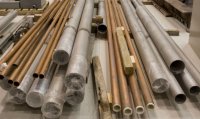 |
 |
|||||||||||||
|
|||||||||||||
|
|||||||||||||
|
I have three different routes to choose from when I drive to work in the morning. The first one is the interstate. Itís fast theoretically, but traffic and tolls can turn my 15 minute commute into 45 minutes. Back roads are another option, but the constant stop and go from traffic lights drain my gas tank. The scenic route is my third option and usually the one that I choose. This route goes slightly out of the way, but there is no traffic, tolls or stoplights. So I can drive at a relatively constant fast speed, and the rolling hills and farms along the way are relaxing. Every morning when I get into my car (usually 15 minutes later than I would like), I weigh the pros and cons and select one of these routes. Rick Lambert from the U.S. Army Corps of Engineers will tell you that this is a form of value engineering, and it is one way that the Global Design Effort will find ways to reduce costs for the proposed International Linear Collider.
On 27-29 November, the ILC-Americas team held their first Value Management Workshop at Fermilab. Roughly 25 people met - some ILC scientists and some outside consultants - to find ways to cut costs for water cooled elements in the main linacs. Not the cryogenic systems, these are the cooling elements that keep the equipment at the right temperature. “These are all things that weren't value engineered for the Reference Design Report,” says GDE Project Manager Marc Ross. “We are going back now to reevaluate and brainstorm alternative ways to do things.” To facilitate the process, the ILC-Americas group hired three consultants from the U.S. Army Corps of Engineers. For the Army Corps' Rick Lambert, Keith Ellmers and John Mathis, saving money is their business. They will tell you however that value engineering is not just about cutting costs. Instead, value engineering evaluates how to best fulfill the user's needs with a quality product at the lowest possible cost. To do this, the Army Corps follows a five-phase value engineering method, and U.S. Department of Energy requires all projects to use it. Even though the ILC is in an R&D phase and not an official DOE project, there are advantages to value engineering early. “You can come up with huge savings with little cost implementation during the early stages of project development,” says Lambert. After two and a half days of brainstorming, the workshop attendees selected the ideas with the most potential and began to research each one in more detail. For example, it may be possible to use plastic pipes instead of the more expensive metal ones because the support tunnel is a low radiation environment. Also, the current baseline, which is based on a standard cooling system used in other current accelerators like the Tevatron, specifies purified water for low-conductivity reasons. The majority of pipes in the ILC, however, will not be in direct contact with electrical circuits. “In this case, supplying demineralized water instead of highly purified low conductivity water is okay because we don't have the usual specs,” says Tom Lackowsi, a civil engineer at Fermilab who organised the workshop. Workshop attendees will continue to investigate ideas like this one to determine if they really are viable. The Army Corps consultants will facilitate several value engineering studies for other systems in the ILC and ultimately produce a report with the potential cost savings. -- Elizabeth Clements |
|||||||||||||
| © International Linear Collider |


